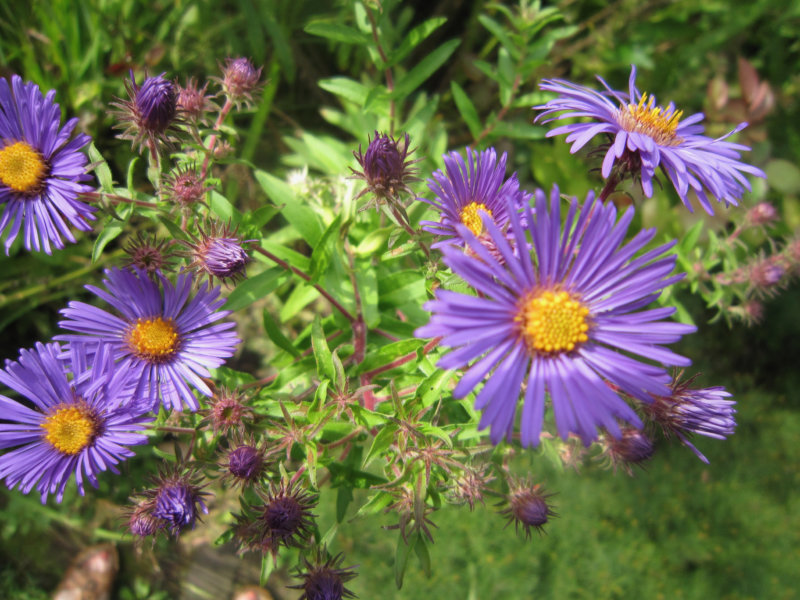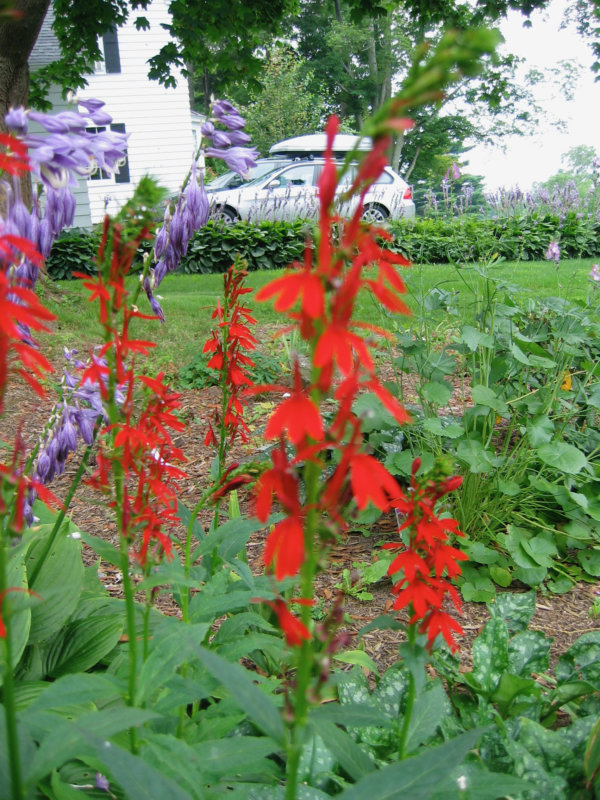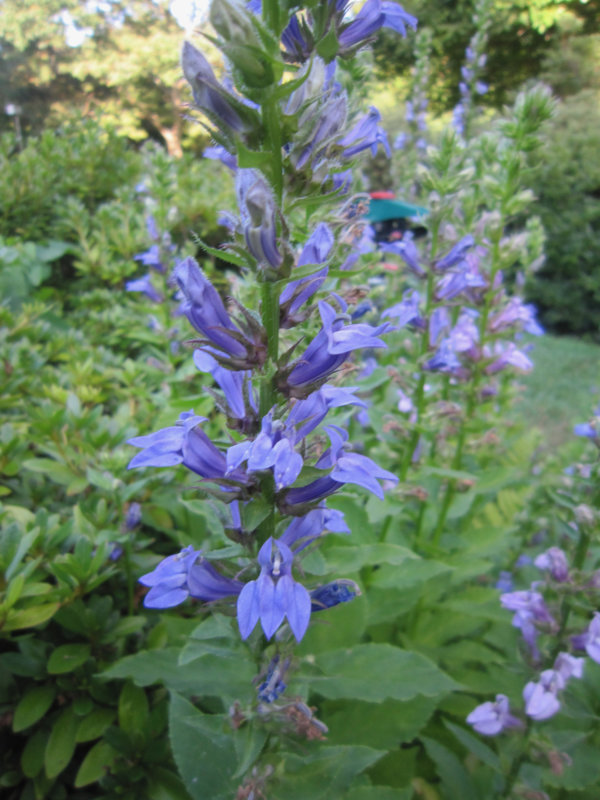The native garden and the ecosystem we are part of
It occurred to me as I’ve read about the dedicated volunteers working at Charlotte’s Park (formerly Demeter) and the Library’s rain garden that I’ve neglected the cause of “native plants.” I belong to a group on Facebook called Native Plants of New England. The learned participants have taught me so much. You might wonder what the big deal is encouraging natives. The group’s “About” information defines a native this way. A native is anything that was growing in New England before European settlers arrived. You might ask why does it matter as long as you have a well-groomed garden, with colorful flowers filled with nectar and vigorous plantings? Well, if you are a bee or butterfly, wasp, moth, bat and certain birds, you’d understand. Different species are attracted to and indeed often need specific plants not only for food but for nesting, raising young and feeding them. Many flowers and plants have clues for the right pollinator to find its food source. If you add a second set of ruffly petals, or a new color, though beautiful, it will throw them off.

One example we’ve heard a lot about is the common milkweed and monarch butterfly relationship. The mature butterfly uses the leaves as a host for laying its eggs and also a source of nutrition for its young. Meanwhile we get to enjoy beautiful aromatic blossoms while we wait. There are many subtler combinations like this, and I am learning about them every day.
One thing that perplexes me is which plants are truly native by the above definition. There are myriad sources online to answer this question. Some plants that are so common and seem like they would be natives turn out to be introduced.

I asked my friends in the group which were their favorite resources for this info. Wow! I got so many answers that I had to do some research myself to find the easiest to navigate. The one most often mentioned is Go Botany. This site is associated with the Native Plant Trust. Others that seem valuable and not too complicated or scholarly are Picture This (an app), USDA database. In William Cullina’s book Growing and Propagating Wildflowers, he assiduously mentions where each is native to. He also includes sources to buy natives and a list of native plant societies. Good reference book. Vermont Fish and Wildlife has a site of Terrestrial Invasive Plants. The Ladybird Johnson Wildflower Center and Audubon Society are good references. There are so many more and I intend to become familiar with them.

Some of the introduced species that have tried to take over our public lands, parks and gardens are buckthorn, barberry, winged euonymous (burning bush), lily of the valley, purple loosestrife, Japanese honeysuckle, Norway Maple and multiflora rose. Some of these are beautiful plants, and one can see the attraction to them. However, we must be strong and resist all urges to include them on our property. Even confining them won’t work. Birds and rodents will move the seeds around and all our best intents are done for. Because their natural enemies may be missing, they run rampant and crowd out our native and useful plants and clog our waterways.
There are many native specimens with equal beauty and value to put in in their stead. Here are a few suggestions of native shrubs: Clethra alnifolia (summersweet), various willows, Vaccinium (high and low bush blueberry), Viburnum acerifolium. Some herbaceous varieties to look for are Baptisia, Aster nova anglia, Cornus Canadensis, Camassia, Sysrinchium augustifolia, Solidago flexicaulis and so many others. Remember too, that different cultivars of the above may not be native. This is where a good reference will help you.
Through the millennia, plants and animals have adapted and learned to depend on each other. This symbiosis has formed the ecosystem we are part of. By changing it up, we interrupt the process. I will probably never have a purely native garden. Because we inherited many well-grown, established plants, they remain. Other specimens are just gotta-haves. Many we couldn’t do without. But we can at least eliminate the most noxious and choose natives when replacing plants, learning as we go and helping the earth survive while we do it. There is so much to learn. And a big thank you to those volunteers who maintain our common lands here in town.

